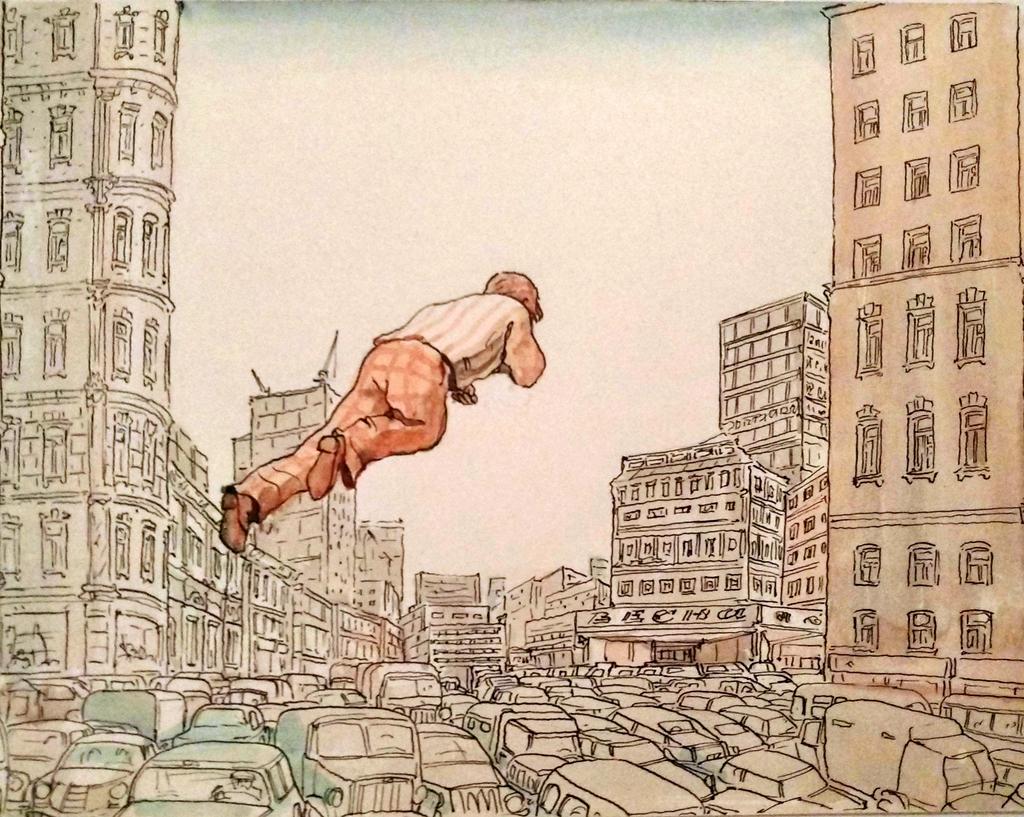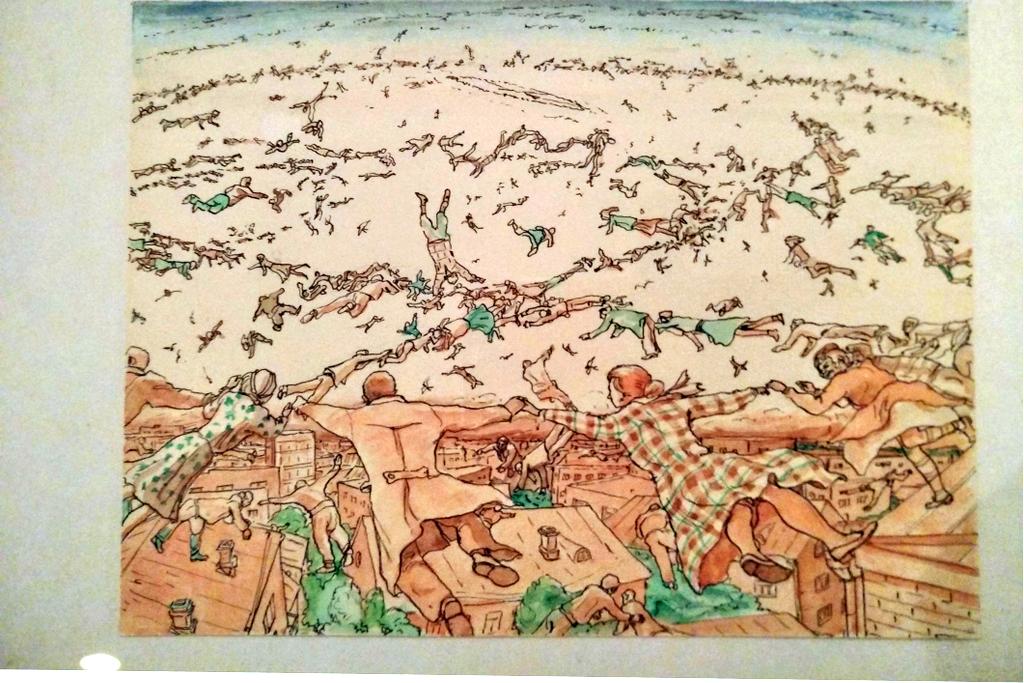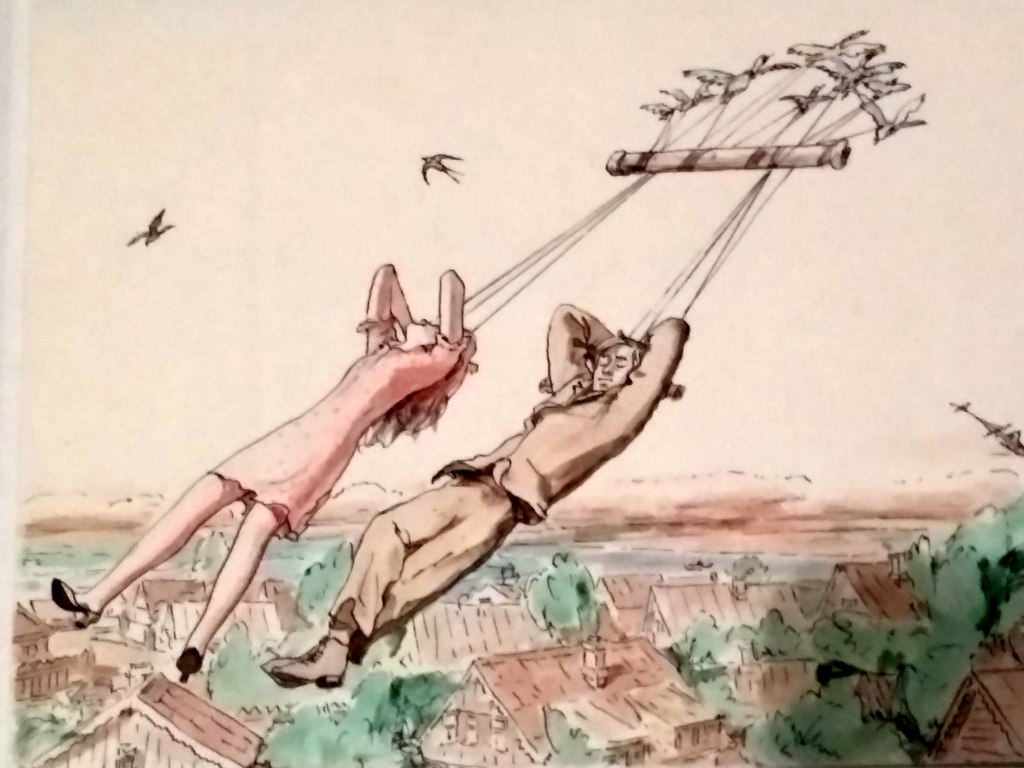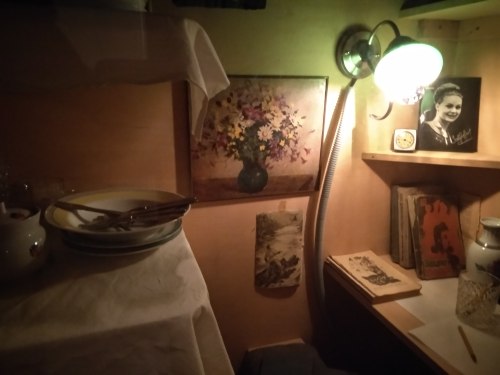Komorov s’envola després d’una discussió amb la dona, al cel hi troba altra gent volant, alguns sols, altres que es fan petits fins a ser confosos amb ocells.



A mi m’il·lustra el somni de sortir volant. Forma part de la sèrie 10 caràcters.
The ten albums tell ten fables: they suggest ten positions from which Homo Sovieticus can react to his world, ten psychological attitudes, ten perspectives on emptiness, ten parodies of the aesthetic traditions through which Kabakov evolved his vocabulary, ten aspects of Kabakov’s personality.
In the album The Joker Gorokhov, the ‘humorous’ attitude toward life comes under criticism as a way of perceiving one’s surroundings that is too light, non-conflictual.
In the album, Generous Barmin, what is analyzed is the capability and desire of each person to ‘define’ another person, to impart to him various qualities, as a rule, that have nothing in common with the actual person.
In the album Agonizing Surikov, the character suffers because life, the meaning of life, is concealed from him by a film. He sees only parts, shreds, fragments through this curtain.
The album Anna Petrovna Has a Dream tells about a soul that no longer has a material, physical shell. This soul travels amidst our world, not touching anything, and ultimately it flies off, abandoning this world.
The Flying Komarov is a utopia of bliss, a state of eternal hovering, suspension between heaven and earth, between a dream and reality.
In Mathematical Gorsky we have the fear of winding up in a compulsory series with ‘others,’ a desire no matter what to ‘leave the series,’ to abandon it.
The album The Decorator Malygin is about the impossibility, the lack of desire, to wind up in the ‘center,’ to step out into the ‘middle,’ about the desire to hide in the corner, to be ‘on the edge,’ ‘on the side.’
The Released Gavrilov tells about the desire to run, disappear, dissolve, lose oneself in nature, where nature is the image of happy idleness, happy non-being.
The last album of Ten Characters – The Looking- Out-the-Window Arkhipov – tells about a dying consciousness where the images of consciousness blur like temporary designs on glass, and a vision of another world emerge before one’s consciousness.
Artista conceptual de Moscú dels 80. Vaig veure també “vida a l’armari”.


https://ilya-emilia-kabakov.com/
Aquest és un exemple de les instal·lacions que ha fet la resta de la seva carrera. Cadascuna un món imaginari que convida a entrar-hi.
